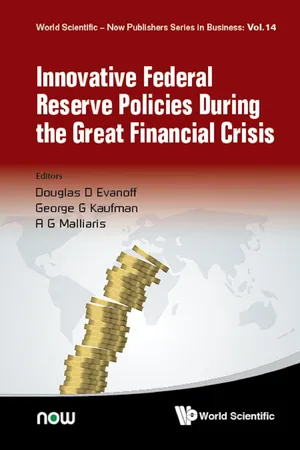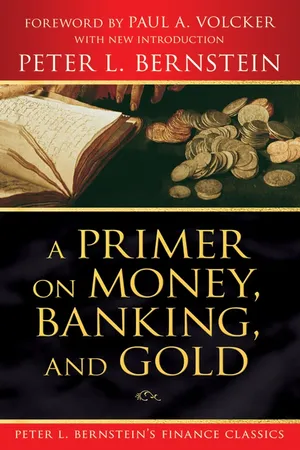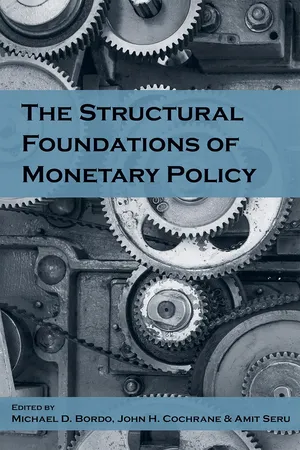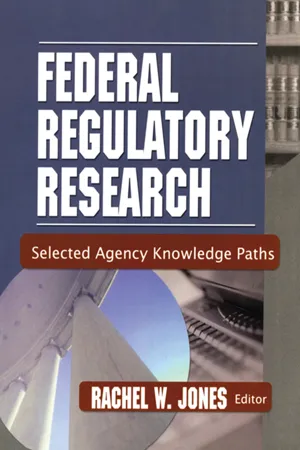Economics
Federal Reserve Balance Sheet
The Federal Reserve balance sheet is a financial statement that shows the assets and liabilities held by the Federal Reserve. It includes details of the central bank's holdings of securities, loans, and other assets, as well as its outstanding liabilities such as currency in circulation and reserves held by depository institutions. The balance sheet is a key tool for understanding the Fed's monetary policy and its impact on the economy.
Written by Perlego with AI-assistance
Related key terms
Related key terms
1 of 4
Related key terms
1 of 3
6 Key excerpts on "Federal Reserve Balance Sheet"
- Douglas D Evanoff, George G Kaufman, A G Malliaris(Authors)
- 2018(Publication Date)
- WSPC(Publisher)
Going forward, the large balance sheet of the Federal Reserve System will not hinder the implementation of monetary policy because the target interest rate is effectively controlled by the interest rate on excess reserves and Federal Reserve actions regarding the size and composition of the assets on the balance sheet are separate and distinct. Further, the existence of a large Federal Reserve Balance Sheet (relative to macroeconomic aggregates) has historical precedents, although the large balance sheet arose for different reasons. 4. Brief History of Federal Reserve Balance Sheet Size This discussion summarizes the evolution of the Federal Reserve System balance sheet from 1917 through the present from a general aggregate perspective. 3 Comparable to the sharp increase in the Fed balance sheet during 2008–2009, there are several experiences in the U.S. history during which the Federal Reserve System balance sheet was either growing rapidly relative to the growth rate of relevant nominal aggregate quantities or the balance sheet level was large relative to the level of those same nominal aggregates. The effects of both WWI and WWII on the Federal Reserve System balance sheet were immense as well as distinct from any other periods. 4 From a governance standpoint, the primacy of financing the wars placed the Treasury in an influential position relative to the Fed, and Fed policies designed to support the Treasury had important and longlasting effects on the operations of the Federal Reserve System. In each case, the effects of war financing on the size of the Fed balance sheet were reversed, and in the case of WWI, relatively quickly- eBook - ePub
Lessons from the Financial Crisis
Causes, Consequences, and Our Economic Future
- Rob Quail, Robert W. Kolb(Authors)
- 2010(Publication Date)
- Wiley(Publisher)
This is discussed further on. Following from the analysis of the change in the nature of the Fed’s operations and asset holdings, I also discuss the magnitude of the risks to the new Fed balance sheet as well as its ability to cope with those risks. Although risks are considerable in certain unlikely scenarios, FRB capital, earnings capacity, and reserves are more than ample to preserve their financial independence. Nevertheless, the occurrence of losses or a significant drop in FRB profit might lead to an eventual curtailment of Fed operational independence. I also discuss measures that can be taken to minimize the Fed’s exposure to losses and preserve its operational independence. The end of this chapter discusses proposals to clearly separate monetary policy from financial stability intervention policy in what might become the new financial architecture once the crisis subsides. CHANGES IN FED OPERATIONS AND ASSET HOLDINGS Although the world’s major central banks have somewhat idiosyncratic operating procedures, their basic philosophies are essentially similar and are based on a common financial architectural fact—commercial banks settle their payments among each other with deposits they hold at the central bank. Owing to the vagaries of daily interbank payments, individual banks find themselves on any given day with either a shortage or excess of deposits at the central bank (usually denoted as reserves), and an active interbank lending market distributes funds to equilibrate supply and demand for funds at the market interest rate by the end of each settlement day. The central bank, as its name suggests, is both the locus of the settlement of transactions and uniquely positioned to create or withdraw reserves from the system. Monetary operations adjust the supply of reserves so that the interbank market clears at the interest rate set by the monetary policy authority - eBook - ePub
Profiting from the World's Economic Crisis
Finding Investment Opportunities by Tracking Global Market Trends
- Bud Conrad(Author)
- 2010(Publication Date)
- Wiley(Publisher)
So the Federal Reserve came to the rescue somewhat belatedly but with programs that can potentially be damaging to the dollar. The problem is that the Federal Reserve now has all kinds of questionable assets on its books that could be very difficult to sell if it were to try to exit its big easing programs. The Federal Reserve has been secretive, defying lawsuits and opposing even basic government auditing. It won’t explain the details of who obtained what support and the actual value of the assets on its books. Foreigners are asking questions, and the most likely interpretation is that if the Federal Reserve can act so precipitously, then the long-term purchasing power of the dollar is very much in question. This kind of monetary expansion has almost always led to significant price inflation in the following periods.How Did the Fed Pay for Its Big Expansion?
Of course, as on every balance sheet, liabilities must match assets. In the case of the Fed, it’s important to understand the changes in the nature of its liabilities as they spiked higher along with assets. How that was accomplished can help us understand much about the economic environment we are now in, so let’s take a look at Figure 4.2 .Historically, the Federal Reserve’s main purpose was to issue paper dollar currency. That’s what the bottom chunk in Figure 4.2 identifies. As you can see, currency has grown only modestly in the whole time of this graph of 2007-2009. The only important liability that the Fed had on its balance sheet until mid-2008 was the currency. All that changed as the credit crisis became a panic.What is clearly far from normal is that the Federal Reserve has invented deposits out of thin air to buy up all those toxic assets from the banks. The Federal Reserve invents a deposit at the Federal Reserve in the name of the institution from which it buys Treasuries, MBS (or toxic assets). It then winds up with the assets, and the institution now has an account to spend as it wishes. That provides banks and other financial institutions with a lot of cash to keep on deposit at the Federal Reserve. Normally, such deposits would be drawn down and invested in other loans that would pay interest. Until 2009, no interest was paid on the deposits at the Federal Reserve. But now, with the Federal Reserve paying interest, the banks have not drawn down these excess reserves, and they are still sitting at the Federal Reserve.SOURCE: Federal Reserve.Figure 4.2Federal Reserve Liabilities Grew from DepositsThe monetary base is defined as currency in circulation plus the reserves at the Fed. The total is what the Fed is supposed to be able to control. The longer-term picture, shown in Figure 4.3 - Peter L. Bernstein(Author)
- 2008(Publication Date)
- Wiley(Publisher)
Thus, through control of the supply of member bank reserves, the Federal Reserve authorities attempt to influence member banks to increase or decrease their credit operations and, thereby, to expand or contract the quantity of money—the purchasing power in checking accounts. In short, whereas the focal point of Federal Reserve operations is the supply of member bank reserves, the ultimate object of their activities is to regulate the quantity of money.There is nothing complicated about the mechanics of Federal Reserve operations. In fact, we have only one thing to keep in mind: the Reserve Banks are bankers’ banks—that is, they function in relation to the member banks in precisely the same way that the commercial banks function in relation to the public. The following are some important illustrations of this relationship.As the public holds most of its ready money in the form of deposits in commercial banks, so the commercial banks hold most of their cash resources in the form of deposits at the Federal Reserve Banks.As the commercial banks provide a convenient means for an individual or business firm to make payments by transferring funds to another individual or business firm through the use of checking accounts—that is, through simple bookkeeping procedures—so the Federal Reserve System provides a convenient way for one bank to transfer funds to another bank through bookkeeping procedures rather than through any physical transfer of cash.As the public deposits its excess currency holdings in checking accounts at commercial banks, where it is more conveniently spendable, and as the public also replenishes its supply of currency by withdrawals from checking accounts, so commercial banks will draw down their accounts at the Federal Reserve Banks when they need additional amounts of currency to satisfy the public. And so, also, the commercial banks will redeposit at the Federal Reserve excess currency that accumulates in their vaults.- eBook - ePub
- Michael D. Bordo, John H. Cochrane, Amit Seru, Michael D. Bordo, John H. Cochrane, Amit Seru(Authors)
- 2018(Publication Date)
- Hoover Institution Press(Publisher)
For payments of principal that the Federal Reserve receives from maturing Treasury securities, the Committee anticipates that the cap will be $6 billion per month initially and will increase in steps of $6 billion at three-month intervals over 12 months until it reaches $30 billion per month. For payments of principal that the Federal Reserve receives from its holdings of agency debt and mortgage-backed securities, the Committee anticipates that the cap will be $4 billion per month initially and will increase in steps of $4 billion at three-month intervals over 12 months until it reaches $20 billion per month. The Committee also anticipates that the caps will remain in place once they reach their respective maximums so that the Federal Reserve’s securities holdings will continue to decline in a gradual and predictable manner until the Committee judges that the Federal Reserve is holding no more securities than necessary to implement monetary policy efficiently and effectively. Gradually reducing the Federal Reserve’s securities holdings will result in a declining supply of reserve balances.A Balance Sheet for the FutureWhile a statement that the supply of reserve balances will decline by set amounts reduces uncertainty and lowers the chances of market disruption, there is still a great deal of uncertainty about what kind of balance sheet the Fed is aiming for. As stated in the Addendum, the “Committee currently anticipates reducing the quantity of reserve balances, over time, to a level appreciably below that seen in recent years but larger than before the financial crisis; the level will reflect the banking system’s demand for reserve balances and the Committee’s decisions about how to implement monetary policy most efficiently and effectively in the future. The Committee expects to learn more about the underlying demand for reserves during the process of balance sheet normalization.”The Fed could be more specific about the eventual size and configuration of the balance sheet, as the range of uncertainty is still very large. There are different views about this, as explained by Powell (2017). One approach is for the Fed to say it is aiming for an eventual balance sheet and level of reserve balances in which the interest rate is determined by the demand and supply of reserves—in other words, by market forces—rather than by an administered rate under IOER. Conceptually this means the Fed would be operating under a framework with a balance sheet, as it did in the years before the crisis—for example, around 2006 and in the decades before. Most likely the level of reserve balances will be greater than the $14 billion observed in 2006 and will depend on liquidity regulations, but the defining concept of a market-determined interest rate is what is important. - eBook - ePub
Federal Regulatory Research
Selected Agency Knowledge Paths
- Rachel Jones(Author)
- 2013(Publication Date)
- Routledge(Publisher)
working papers series, which are preliminary economic discussion papers on domestic and international topics.The Federal Reserve Bank of San Francisco has a web site with a searchable index, called Fed-in-Print, which contains bibliographic information on almost all economic articles, papers and congressional testimony published by the Federal Reserve System (http://www.frbsf.org/publications/fedinprint/index.html ). Some of the entries date back to the early 1960s and there is a link to the full text of those published since 1996.Economic research published by the Federal reserve banks frequently focuses on their district states or region of the country. Some reserve banks have also developed certain specialty research centers. For instance the Federal Reserve Bank of Dallas has a Center for Latin American Economics Research (http://www.dallasjed.org/htm/latin/center.html ). The Federal Reserve Bank of Kansas City has a Center for the Study of Rural America (http://www.kc.frb.org/home/subeconomic2.cfm?menu=2 ). The Federal Reserve Bank of Cleveland has a Central Bank Institute (http://www.clev.frb.org/CentralBankInstitute/index.htm ).Financial ServicesEach Federal reserve bank provides various financial services to the U.S. government, financial institutions, and indirectly to the general public. Reserve banks act as fiscal agent and depository to the United States Government through assisting in Treasury debt auctions, savings bond programs, electronic book-entry securities via Fedwire, Treasury tax and services, electronic Federal tax payments, and other services. Reserve banks act as bankers to banks and other financial institutions by providing them with accounting services, automated clearinghouse services for regular electronic payments, Fedwire electronic settlement services of book-entry securities, cash services (supplies of coin and currency), check clearing services, electronic fund transfers and net settlements, electronic statistical reporting services, and other services.
Index pages curate the most relevant extracts from our library of academic textbooks. They’ve been created using an in-house natural language model (NLM), each adding context and meaning to key research topics.
Explore more topic indexes
Explore more topic indexes
1 of 6
Explore more topic indexes
1 of 4





